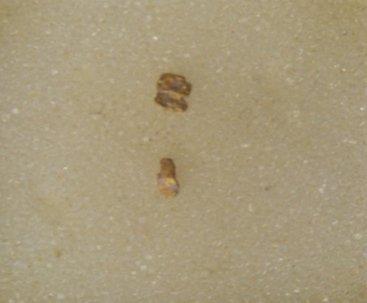roy cobb
Steve
Thanks for the story Bob looking foward to getting out with mine soon in the gold fields so you have given me some hope and I have a 6" coil 


argyle said:Here are a few notes that may help some get the best out their Eureka Gold.
They are a much maligned unit, as were the previous XT models, due to the introduction of the PI detectors. There was a lot of rather bad instructional hints and recommendations given out by dealers and detecting 'experts' who were more often than not mis-using the detectors and giving bad advise on the use of them on the goldfields.
It is no wonder that most people think these units only hit surface to a few inches deep, or cannot be run on hot ground.
Here are a few of those terrible pieces of theoretical nonsense:
* Having the threshold set low at a slight mosquito type buzz.
* Coil off the ground.
* Sensitivity lowered when not needed to be.
* Fast movement of coil when in motion of swing.
* The very idea that these VLF's are somehow not deepseeking detectors on mineralized ground.
Here's a few facts that a lot of those 'experts' never picked up on.
1. The threshold must be set at a high stable level on the ground being detected. The level of mineralization must not be able to waver the threshold! It must remain stable and un-wavering. No mosquito buzzing.
2. You must run these units with an Amplifier! ( they really should have been in-built at the design level by Minelab)
The internals of the machine must be heard. The tracking balance's change, as you swing, must be full in your hearing. If you cannot hear that internal balance change, running with the correct height of threshold in the ground you're on, how are you going to hear that ever important drop-out of threshold that a deep faint signal gives, or the very soft rise of threshold that a small shallower targets let's out that isn't quite strong enough to break through and give a clear easy signal.
3. The tracking balance on these units is the best produced by any manufacturer.
The only way to ground balance to get the tracking to kick in, is to slowly drop the coil to touch the ground, slowly raise it, back down again and let the tracking balance soak it up. As soon as it does it bites in hard and becomes one with the ground.
And that's where the coil has to stay, ever so slightly touching, riding over dirt and sand and rock with the touch of a spider web.
Speed of the coil swing should be used in direct correlation both on the ground you're in, and with the tracking speed used. You will hear how fast or slow to swing because you will hear how the internal tracking balance is processing and tracking through the ground.
Every time that coil comes off the ground to a few inches in height the tracking breaks and balance tries to re-set.
4. The sensitivity should always remain at it's fullest setting. The only time it should be turned down a touch is when over extremly bad ground. Ground that gets our PI's warbling and groaning.
And by running the threshold at the correct height, believe me, there isn't much ground you have to touch the sensitivity down in.
You drop that sensitivity level and you drop your depth in half!
Wether it's an inch or a two feet, depth is everything. Touch that sensitivity and you touch every signal in a bad way.
5. Coil to match frequency is important on these units.
Stock 10"x5" elliptical for 60khz only.
11" round for 20khz
15" Coiltek for 6.4khz
It is no coincidence that these coil sizes are made for the Eureka.
60khz is not a deep seeking frequency. It simply will not give depth. It tickles nicely into the ground for an inch or so. You can hear how deep it goes if you have those internals right up in your hearing. Use this frequency on the 11" round or 15" round and it dissapates badly.
20khz is the most responsive pound for pound. But beware ....that frequency is not a deepseeker either.
6.4khz. Ahhhh .... All controls set at their premium for the ground your on, and working with the 11" or 15" coil, this frequency is crystal clear and deadly!
Don't fool yourself with airtests, this frequency is just as dull in an airtest as the airtest itself is.
Or set targets placed into disturbed ground. Both these scenarios are only enjoyed by Vlf's of other brands that don't like to play in heavy ground.
This 6.4khz frequency loves giving you notice to metallic targets in undisturbed heavy ground. It's a gold getting sleeper.
6. Tone control on any threshold based unit is so important.
Change it to suit your hearing. Change it in certain ground. And change it to understand the differences in 'broadening' a response on a tight signal, and 'sharpening' up a response on a deep target.

Enter your email address to join: